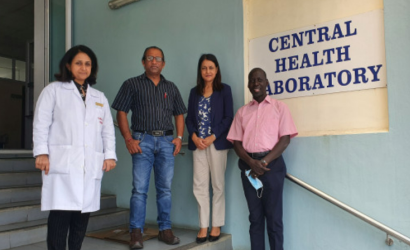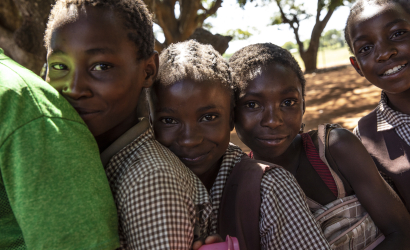Introduction
Food is life. Yet, today’s food systems are making us sick and degrading natural resources. This is fueling a vicious cycle between the triple planetary crisis and malnutrition further complicating the current rather dismal global landscape. Sustainable healthy diets have the potential to abate these negative trends on both fronts. While they are a powerful lever for food systems transformation, analyses [1] indicate that nutrition and healthy diets were adequately included in a very small proportion (between 11.6%[2] and 15.6% [3]) of the 100-odd national food systems pathways, developed since the United Nations Food Systems Summit (UNFSS) in 2021.
This article explores the experience of El Salvador, which proved highly successful in incorporating measures that support healthy food consumption patterns and address the triple burden of malnutrition in its pathway. This is tremendously important for realizing the right to good nutrition for all. With the 75th anniversary of the Universal Declaration of Human Rights at our doorstep and 42% of the world’s population unable to afford healthy diets, what better time to charge forward.[4] The UN-Nutrition Secretariat spoke with UN colleagues in-country to investigate what learning can be harnessed from El Salvador, including how nutrition colleagues came together to support these efforts.
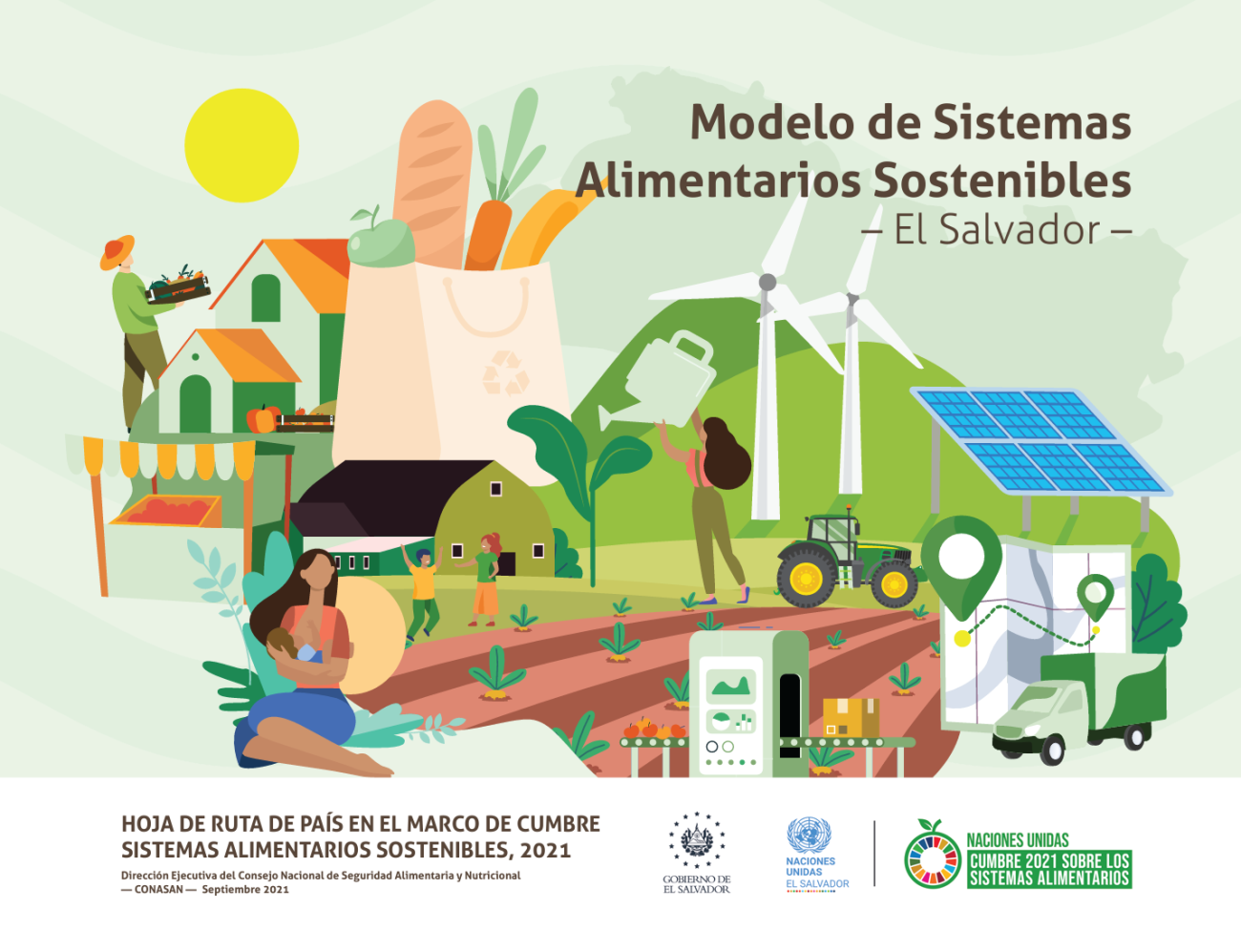
A snapshot of nutrition in the national food systems pathway
According to an analysis conducted by colleagues at the Food and Agriculture Organization of the United Nations (FAO), El Salvador was one of thirteen countries which was “found to have comprehensively included all forms of malnutrition, healthy diets and looked at food from a nutrition/health, socioeconomic and environment perspective” in its pathway. This meant that it met all ten of the group’s inclusion criteria, ranging from undernutrition to overweight/obesity, noncommunicable diseases (NCDs), diets and unhealthy diets/foods. The latter, increasingly prevalent in today’s food landscapes and complicit to rising overweight and obesity trends in all regions, was a distinguishing factor in their analysis signaling a sophisticated understanding of nutrition in the national pathway.[2]
A complementary analysis, performed by colleagues from the World Health Organization (WHO) and the UN-Nutrition Secretariat, considered 38 nutrition parameters. These encompassed general nutrition considerations, the seven WHO Priority Food Systems for Health policy actions, the prevailing nutrition and NCDs targets established by the World Health Assembly (WHA) and actions on a subset of recommendations from the Second International Conference on Nutrition. El Salvador also fared well in this review, including nutrition indicators in line with global targets, such as under5 stunting and wasting, anaemia, exclusive breastfeeding and adult obesity. The national pathway contains five out of the seven WHO priority food systems policy actions, including fortification, nutrition-oriented fiscal policies, nutrition labelling, healthy public food procurement and food safety. While it did not explicitly take into account food product reformulation, this may potentially be addressed through the pathway’s call to strengthen scientific research and technology transfer regarding biofortified foods in the food industry and local food production.
Not only did El Salvador embed nutrition in its national food system pathway, it prioritized nutrition, and furthermore, made it the first priority. Priority 1 – Responsible and sustainable consumption to reduce malnutrition and noncommunicable diseases (NCDs) – outlines specific actions to promote good nutrition throughout the lifecycle, starting with breastfeeding initiatives. For example, this entails training for lactation counselors and breastfeeding promotion, protection and support through the ‘Love Becomes Food Law’ (Ley Amor convertido en alimento) and the new national nutrition strategy under development. The pathway, officially called a 'roadmap', also details actions for nutrition-sensitive agriculture, such as incentives for local fruit and vegetable production and biofortification, school-based nutrition, as well as social behaviour change communications (SBCC), including campaigns that directly target Salvadoran families. In addition, the government intends to update the national food-based dietary guidelines, which will help further ground coherent nutrition-smart and environmentally friendly food systems transformation. Another noteworthy component of priority 1 is the revival of ancestral food culture through the promotion of nutritious indigenous foods and knowledge. Moreover, the use of the term roadmap gives the framework a stronger action orientation.
Towards transversal action
Food and nutrition education is a cornerstone of El Salvador’s food systems roadmap. The framework calls for the capacity strengthening of the Ministry of Education, Science and Technology to support the implementation and scale up of a national strategy for food and nutrition education. In particular, it targets community-level public educational centres and includes large-scale training of teachers, recognizing their potential to act as change agents to promote healthy lifestyles in schools. It also encompasses training for food handlers and updating school curricula at all levels to enhance food and nutrition education, complemented with healthy school feeding programmes and growth monitoring (weight and height measurement) at schools as part of efforts to curb overweight and obesity. Each of these actions are being supported by the UN agencies according to their respective mandates in nutrition, such as various aspects of food and nutrition education supported by FAO, weight and height measurement supported by UNICEF and WFP-supported school feeding.
In addition, nutrition education is positioned as a cross-cutting component alongside other enablers such as multisectoral coordination. This is helping to positively reinforce the nutrition provisions included under the respective priority areas, such as nutrition-sensitive food assistance under priority 3: Mitigating the impact of climate events and other crises on production and livelihoods. Anti-anaemia programmes, articulated under priority 1, straddle food, health and water systems, likewise capturing multisectorality.
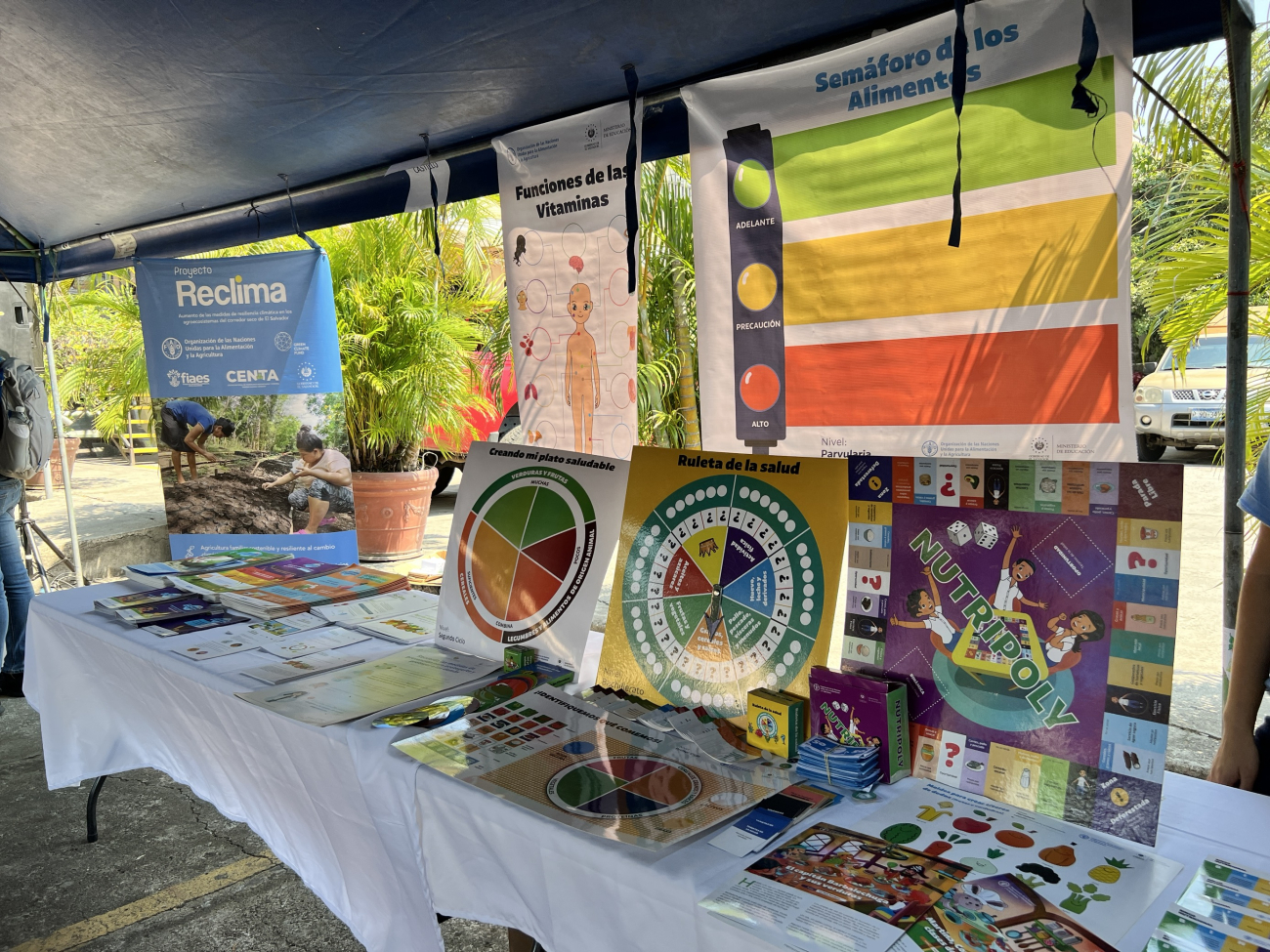
The ‘How’
Reina Osorio Guevara, a food systems specialist, from the FAO country office explains that the starting point was a food systems situation analysis, jointly conducted in collaboration with the Government of El Salvador. This demonstrated that the country was facing a triple burden of malnutrition – chronic malnutrition, micronutrient deficiencies and obesity and overweight – and rising levels of NCDs. High levels of consumption of unhealthy convenience foods and sweetened beverages together with low fruit and vegetable consumption, food deserts, marketing of unhealthy foods and high prices of healthy foods and poverty were cited among the factors contributing to malnutrition and diet-related NCDs. This diagnosis not only anchored the national pathway, but also helped to foster consensus around the way forward, including among the UN agencies that are active in UN-Nutrition (FAO, IFAD, WFP, UNICEF and PAHO/WHO) in the country. The roadmap provides a common framework around which the UN agencies have aligned, each contributing with technical assistance and financial resources within their area of expertise/mandate. Karen Panameño, who is a UNICEF Health and Nutrition Officer based in San Salvador, pointed out that the roadmap’s SBCC provisions particularly exemplify joint UN nutrition support. FAO, PAHO and UNICEF are working with municipalities and communities, in coordination with the Ministry of Health through the ‘For healthier families’ initiative (Por familias mas saludables) to provide basic messaging on nutrition, breastfeeding and healthy diets to families, taking into account climate change and economic considerations, such as the affordability of healthy foods.
Another strategy employed to position nutrition prominently in the roadmap was to secure high-level political support. For example, the Office of the First Lady is championing breastfeeding promotion, nature’s first food system, thanks in large part to earlier efforts supported by UNICEF. The country’s food system roadmap capitalizes on this and has articulated a direct role for the First Lady in its operationalization. Furthermore, efforts to sharpen the nutrition lens of the country’s food systems transformation agenda were linked to ongoing ‘regular’ UN coordinated nutrition work with the government to support the implementation of public policies, plans and programs (e.g. the Social Development Plan, the Growing Together Policy, the School Food and Health Strategy, and the Master Plan for Agricultural Rescue) towards the achievement of the Sustainable Development Goals.
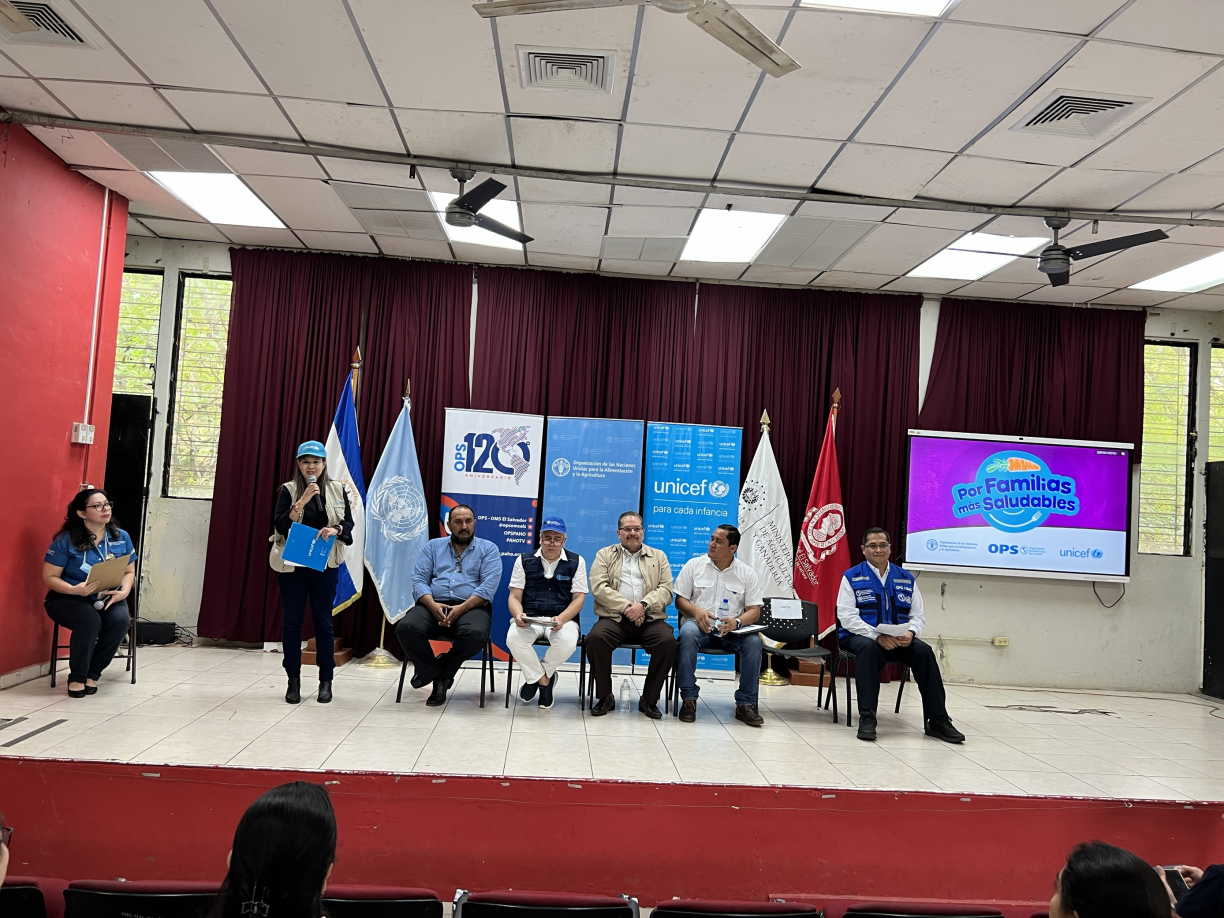
Challenges
According to UN-Nutrition focal points from the UN agencies in El Salvador, limited domestic funding and nutrition capacity in the national health system are some of the top challenges faced when translating the roadmap into action. Likewise, limited availability of nutrition data (stunting among children under 5 years old, anaemia in adolescent girls, exclusive breastfeeding, complementary feeding, etc.). is another bottleneck, which sometimes makes it difficult to make evidence-based decisions. Climate change, including related extreme weather events, is exerting further pressure on the environment and vulnerable Salvadoran families, placing them at increased risk of food insecurity and malnutrition. This requires strategic responses and collaboration across sectors to ensure their needs are met.
Conclusion and next steps
Overall, El Salvador embraces nutrition as a central pillar of food systems, both acknowledging malnutrition as a result of existing dysfunctional food systems and outlining specific nutrition actions in the framework. Based upon a thorough analysis of the current food system, the country’s roadmap details a transformative approach to uphold the right to food for all, anchored to four guiding priorities, including one on nutrition and cross-cutting enablers. According to Karen of UNICEF, this builds on earlier efforts to ground nutrition in the country’s legal framework along with related sensitization and engagement with the Congress and the Office of the First Lady. Establishing increased synergies and collaboration platforms, like UN-Nutrition, among the UN agencies involved will be crucial for future success as the country pivots to action.
The UN-Nutrition El Salvador team underscored the need for a holistic approach and coordinated action that combines livelihoods support, particularly in municipalities affected by multiple crises, with strengthening nutrition in legal frameworks, capacity development for food and nutrition education and nutrition services, as well as supporting behavioral change communications. This is just a glimpse at how El Salvador is at the forefront of efforts to embed nutrition in the food systems transformation agenda. Eyes will continue to be on the country to see how these actions unfold and how they influence El Salvador’s performance on the global nutrition targets in the countdown to 2025. Time will tell.
Endnotes
[1] Two of these analyses (Fracassi et al. and Pullar et al.) were published in the UN-Nutrition Journal on “Transforming Nutrition” last year.
[2] Fracassi, P. Seo, S. and D’Angeli R. 2022. Healthy diets and food in national food systems pathways: An exploratory review. Transforming nutrition. UN-Nutrition Journal. 1:3-9. https://doi.org/10.4060/cc2805en
[3] Pullar, J. Mahy, L., Mora, A., Engesveen, K., Warren, C., de Regil, L. & Branca, F. 2022. Nutrition-related outcomes of the United Nations Food Systems Summit country pathways. Transforming nutrition. UN-Nutrition Journal. 1:10-25. https://doi.org/10.4060/cc2805en
[4] FAO, IFAD, UNICEF, WFP & WHO. 2023. The State of Food Security and Nutrition in the World 2023. Urbanization, agrifood systems transformation and healthy diets across the rural–urban continuum. Rome, FAO. https://doi.org/10.4060/cc3017en

